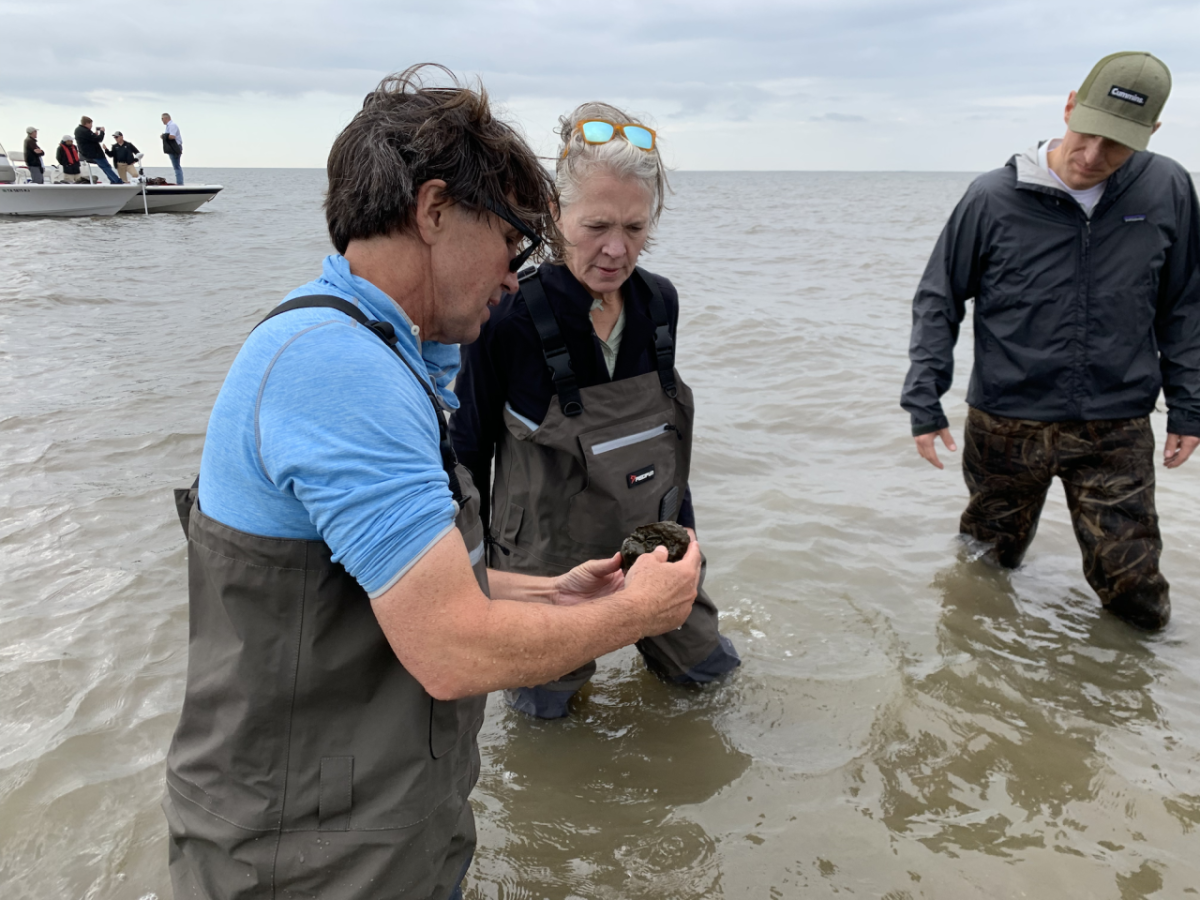Putting Oyster Power To Work To Help the U.S. Gulf Coast

Global power technology leader Cummins Inc. is partnering with The Nature Conservancy to put oyster power to work to improve water quality in the Gulf of Mexico.
Powered by a multi-year, $3 million grant from the company, The Nature Conservancy is leading an effort to improve water quality in the Mississippi River Basin focused on both the upper and lower reaches of the basin.
Earlier this month, Cummins leaders visited an oyster reef restoration project led by the environmental group that’s underway along the Sabine National Wildlife Refuge in Calcasieu Lake in Louisiana. They left impressed.
Cummins Corporate Responsibility Director Travis Meek said he was aware of oysters’ amazing ability to filter out pollutants but until he saw the project first-hand, he didn’t fully appreciate its other environmental benefits.
“Louisiana is losing shoreline at a rate of 75 square kilometers per year, which is faster than anywhere on earth,” said Meek, who oversees Cummins Water Works. “While the reefs are only one of many needed solutions, they significantly slow the rate of erosion where they’ve been built.”
Cummins Water Works is the company initiative to address the global water crisis by partnering with leading water experts and investing and engaging in sustainable, large scale, high impact water projects.
The Wabash River watershed, which includes Cummins’ headquarters in Columbus, Indiana, is the single largest contributor of excess nutrients such as nitrogen and phosphorous from fertilizer to the Mississippi River Basin.
These excess nutrients not only pollute drinking water systems in the Midwest, but also contribute to an extensive dead zone, roughly the size of Massachusetts, in the Gulf of Mexico along the Louisiana-Texas coastline.
The Nature Conservancy is working with farmers in the Midwest on the benefits of sustainable farming practices like no-till farming to reduce the runoff of excess nutrients. A team of Cummins employees recently worked with the environmental group to reintroduce mussels in parts of the upper watershed to help clean and filter water before it reaches the gulf.
Oyster reefs do much the same thing, serving as one of nature’s most efficient filtration systems, according to Seth Blitch, The Nature Conservancy’s Conservation Director in Louisiana. Blitch led the Cummins’ team on their tour of the project.
He said a healthy, one-acre reef can filter approximately 24 million gallons of water each day. Oyster reefs can also serve as natural buffers against rising sea levels from climate change as well as storm events.
The reefs are constructed using wire baskets called gabions filled with limestone placed close to the shoreline to ensure the bulk of any erosion from wave action doesn’t get far.
Over time, oysters cluster on the baskets and fuse together, creating rock-like reefs that provide habitat for other marine life. The reefs also dampen wave energy that would otherwise cause erosion.
The Nature Conservancy has so far restored over seven miles of oyster reefs. Phase III of the project, which extends the reef for about a mile, was constructed in July and August. Blitch said The Nature Conservancy was able to significantly expand the scope of its original plan with Cummins’ support.
Brian Mormino, Cummins’ Executive Director – Technical & Environmental Systems, said the trip left him with a renewed appreciation for the knowledge and dedication of The Nature Conservancy, and the complexity of the challenge moving forward.
“It’s one thing to know about a challenge and another to see it,” Mormino said. “I think the trip strengthened our commitment to what we’re doing, and our desire to do more.”
END

